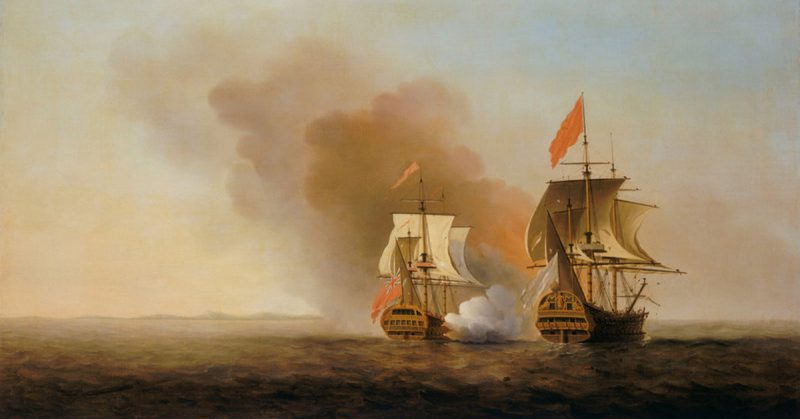Every year on the last Saturday of May, there is a celebration at the Wormsloe Plantation of Savannah, Georgia. In this Southern city known for its hospitality and lack of regulation for public drinking, they commemorate the successful defense of the once brand-new English colony against Spanish forces from Florida during the War of Jenkins’ Ear.
Taking place during the War of the Austrian Succession, this Caribbean, North American, and Pacific conflict between Britain and Spain lasted from 1739 until 1742, when the powers of Europe divided into two alliances and brought the focus and fighting to the continent and away from the colonies.
There, the massive war was fought until 1748, when the treaty of Aix-la-Chapelle was signed and Empress Maria Therese of the Habsburg dynasty, supported by Britain and others, retained the right to her throne.
The curious name of the War of Jenkins’ Ear was coined in 1858 by the Scottish philosopher and historian Thomas Carlyle who referred to an incident in 1731 that became a rallying cry for British who supported war with Spain.
The 18th Century was a time of many large-scale conflicts between the major powers of Europe. When the War of the Spanish Succession ended in 1713, Britain was granted an Asiento, which gave them permission to supply slaves and 500 tons of goods per year to the Spanish colonies.
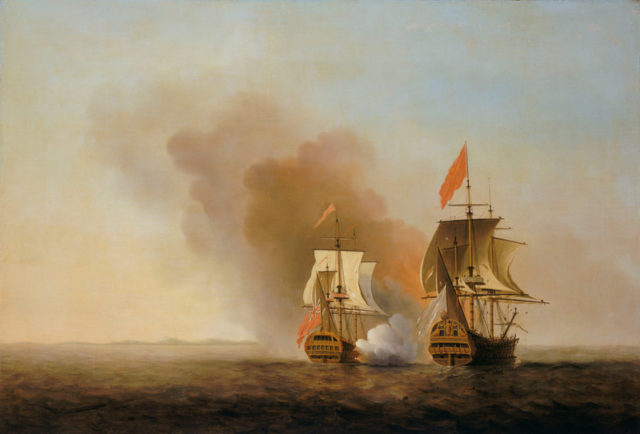
This very lucrative trade with the massive Spanish holdings in the Americas was of great value to Britain and British businesses, especially those who took the opportunity to smuggle goods not approved by the contract.
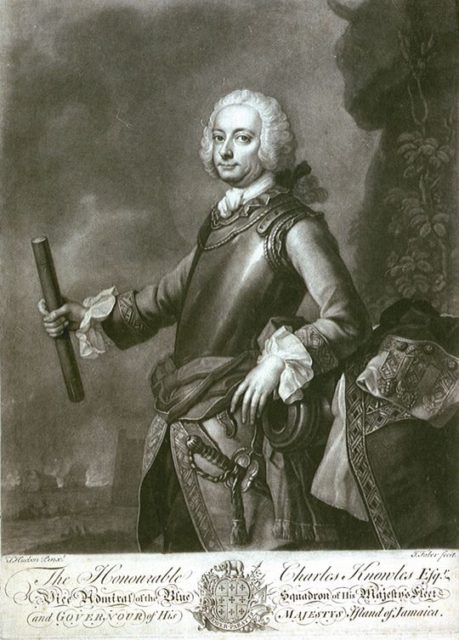
When Spanish sailors boarded the English brig Rebecca off the coast of Florida, suspecting the crew of smuggling unauthorized goods, the commander Julio León Fandiño cut off the English captain Robert Jenkins’ ear and told him, “Go, and tell your King that I will do the same if he dares to do the same.”
In 1738, Jenkins was asked to testify before the House of Commons in the English Parliament. Legend has it that he presented his severed ear.
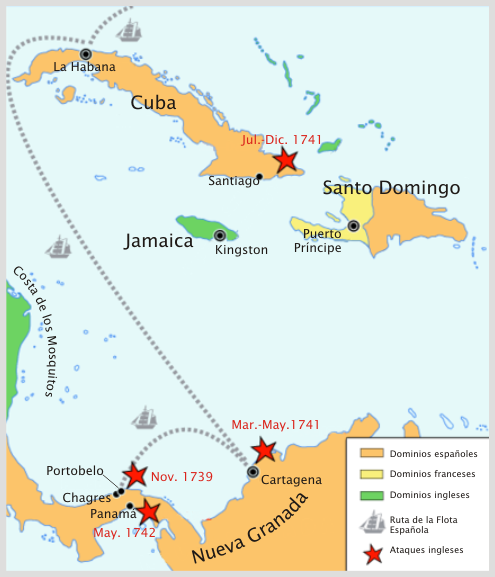
Between this and many other complaints levied against Spain by British subjects and the failure of Britain and Spain to come to an amicable conclusion, war was declared on October 23rd, 1739.
In July of the same year, King George II had already authorized the Admiralty of Britain to seek reprisals from Spain on the high seas and had sent Vice Admiral Edward Vernon and a war fleet to the West Indies.
The British managed to claim several strong victories in the war. The earliest of these was the capture and destruction of Porto Bello in November 1739, a town which exported the Panama region’s silver back to Spain. Back home in Britain, the people rejoiced.
Spain promptly reorganized their trade structure, moving from large fleets sailing out of main ports to a more expansive network operating from smaller ports. Indeed, Spanish convoys maintained their lucrative work through the entire war.
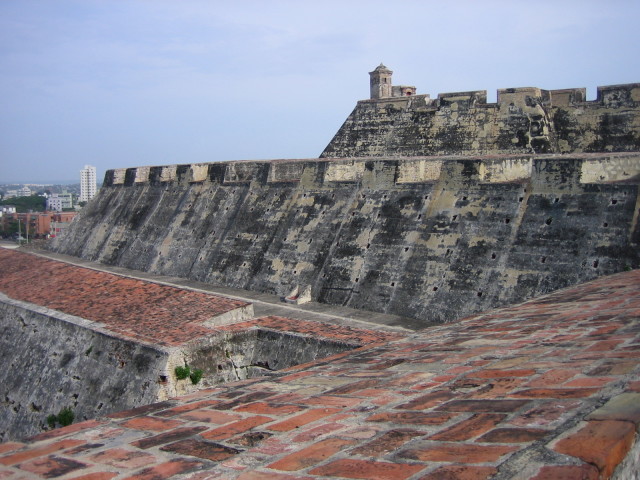
After the first failed assault on Cartagena de Indias in modern-day Columbia, Vernon returned to Panama and sacked the Spanish fortress of San Lorenzo el Real Chagres in March of 1740. This would be, however, one of the last substantial gains for Britain in the Caribbean for the remainder of the war.
A second attempt to take Cartagena de Indias failed. Vernon, however, was determined. He assembled one of the largest Armadas in history, dwarfing the size of the famous Spanish Armada which had sought to invade Elizabethan England a century and a half earlier. Over 180 ships, 2,620 artillery pieces, and 27,000 men were prepared to assault the fortified city.
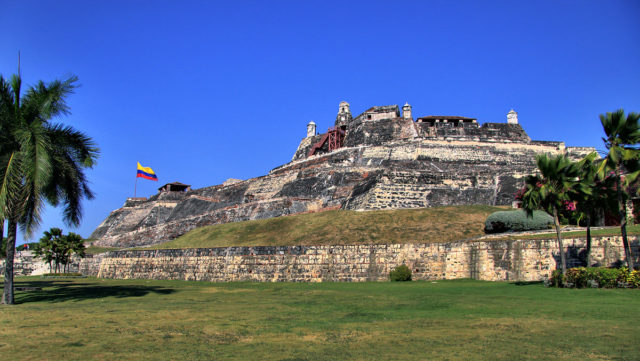
Of the mustered troops, 4,000 had been recruited from Virginia, the first time an American Colonial force was gathered by Britain to fight outside of North America. These men were lead by Lawrence Washington, the half-brother of George Washington (who later became the first president of the United States). Lawrence Washington would later name the family estate Mount Vernon after the Vice Admiral he followed into battle.
In Cartagena de Indias, the Spaniards appointed Admiral Blas de Lezo to their defense. Not just a capable commander, this Admiral was perhaps once of the most seasoned and stalwart naval officers of the time. He had fought in the War of the Spanish Succession and battled pirates from Europe, the Caribbean, the Pacific, and the Barbary States. He had lost his left eye and the use of his right arm. His left leg was hit by a cannonball in 1704 and amputated below the knee. This was a battle-hardened officer who wouldn’t give up the fort very easily at all.
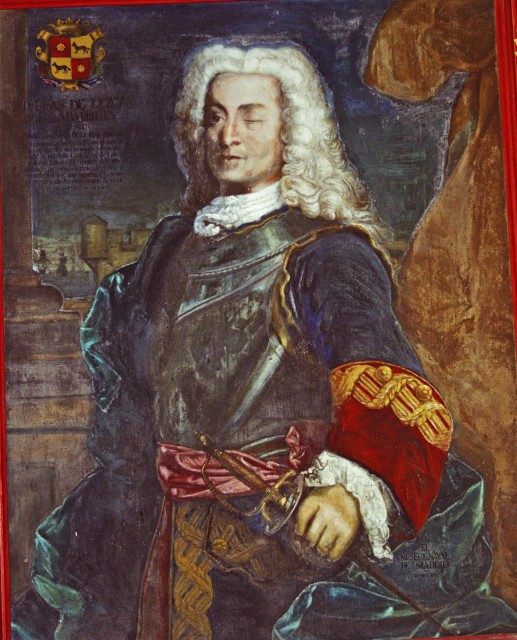
The huge British force laid siege to the city in March 1741 for 67 days. Assaults on smaller forts around the area were successful (prompting Vernon to send word back to London that he had taken the city), but the Spanish defenses, including the formidable San Lazaro (which had been repaired and upgraded since Vernon’s last attempt to take Cartagena de Indias), repelled the attackers. When 2,000 American Colonial soldiers attacked San Lazaro, their ladders for scaling the defenses were too short and they took heavy losses, retreating with 1,200 men left alive.
Disease ravaged Vernon’s fleet, killing thousands more than the Spanish defenders. Yellow fever claimed the most lives. It is estimated that 18,000 men died or were unable to fight because of sickness. Eventually, Vernon called a retreat to Jamaica, effectively ending the War of Jenkins Ear. De Lezo also died from a disease, probably typhoid fever, four months after his successful defense.
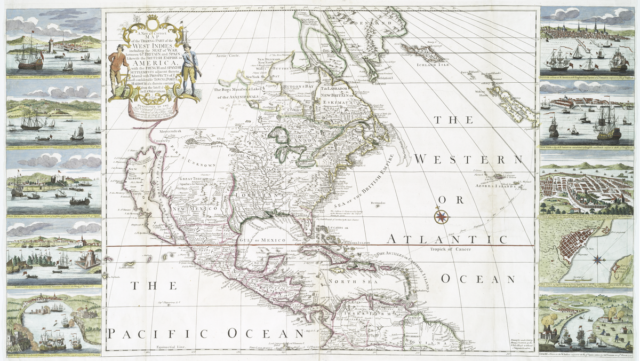
Other British actions of the war included an unsuccessful campaign by Colonial troops from Georgia into Florida and the capture of a Spanish Manila Galleon traveling from the Philippines to the Americas laden with treasures from Spain’s colonies in the Far East.
The conflict had cost Britain many lives and a huge amount of money, but to little gain. However, after the end of the War of the Austrian Succession in 1748 and the ascent of the much more British- and trade-friendly Ferdinand VI to the throne of Spain, relations between the two nations were gradually repaired.
By Colin Fraser for War History Online
